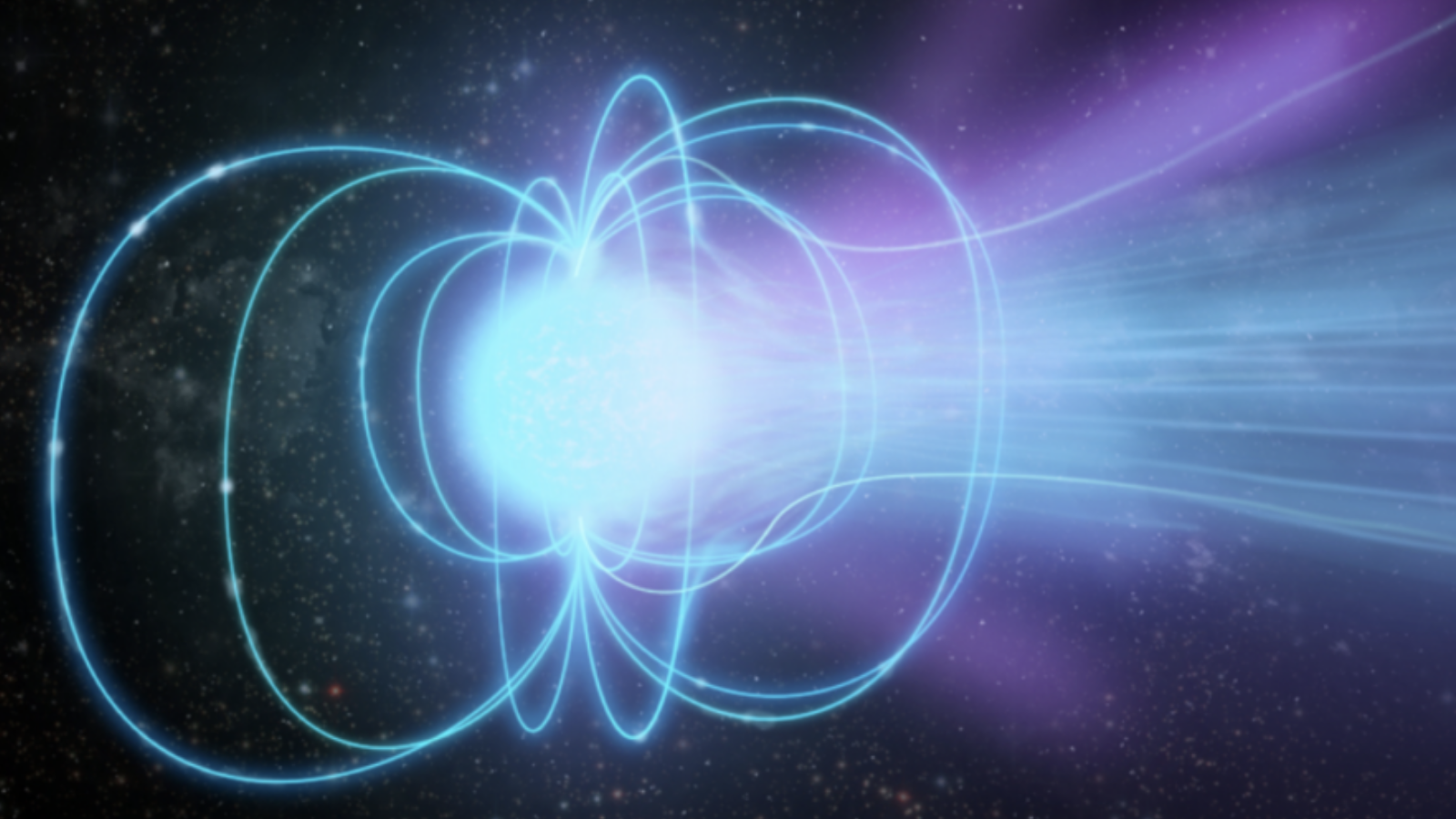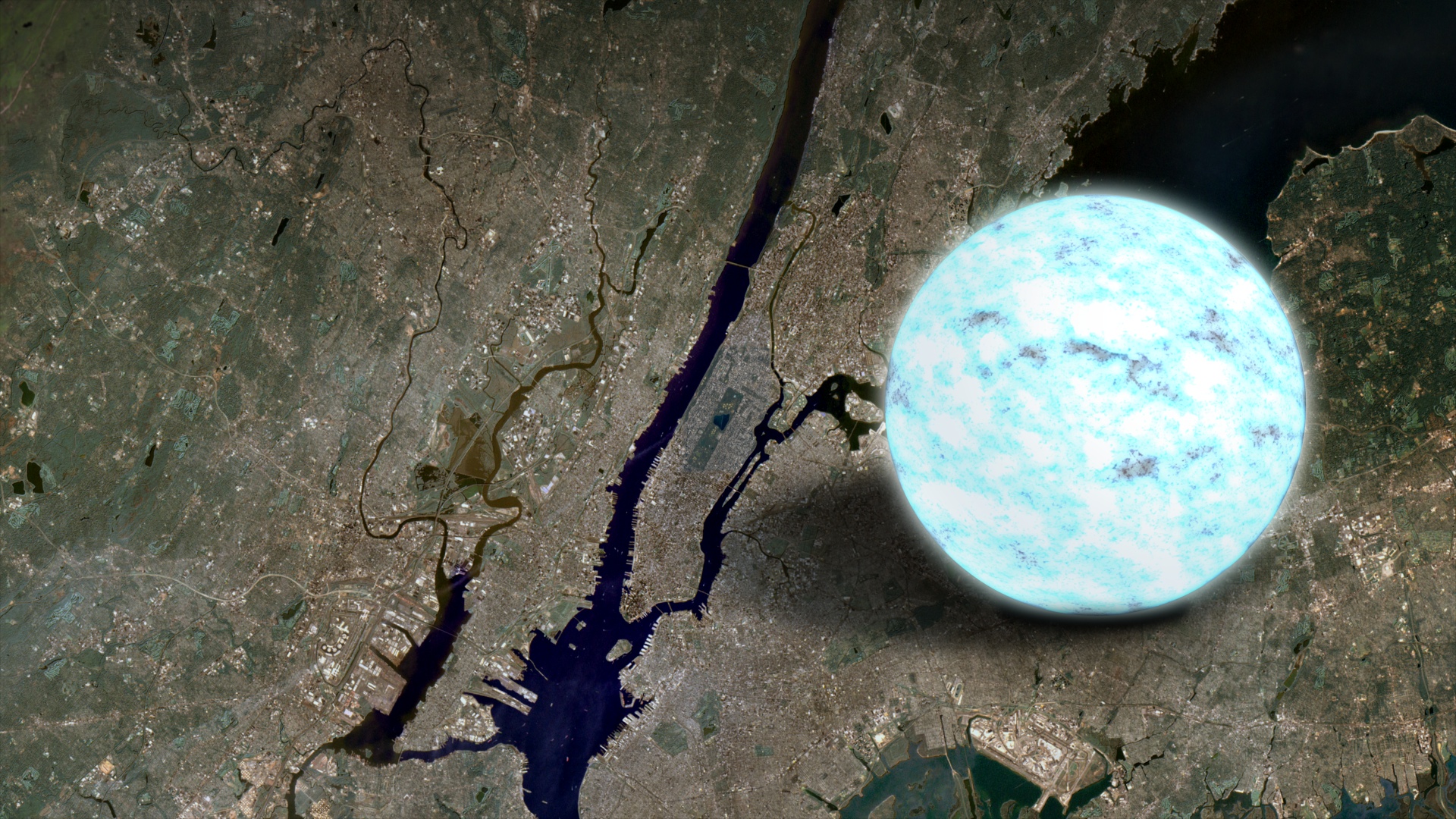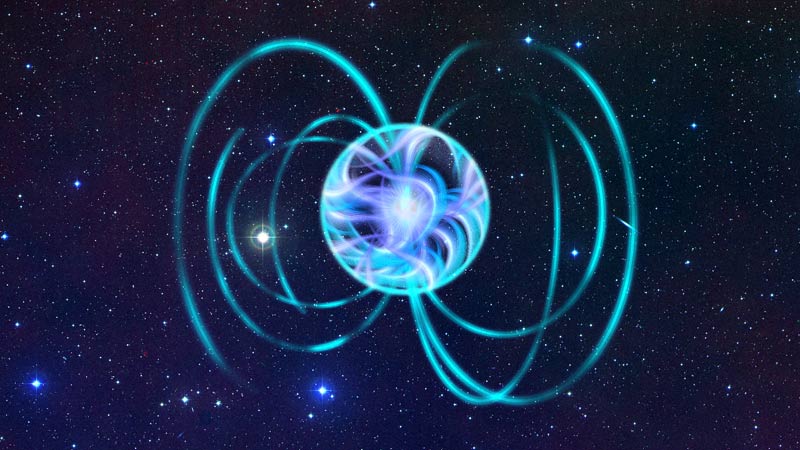
Astronomers are investigating clues from a cosmic crime scene in which a massive star died and left behind an extremely magnetic "dead" star called a magnetar.
Magnetars are a type of neutron star, but with magnetic fields thousands of times stronger. Like another form of neutron star, a pulsar, magnetars spin incredibly rapidly. Scientists want to know what conditions cause the creation of a magnetar, and how these differ from the conditions that birth a pulsar — an "ordinary" neutron star.
To probe this mystery, a team of researchers used the Very Long Baseline Array (VBLA) to study a magnetar called Swift J1818.0-1617, which is located around 22,000 light-years from Earth. Not only does this make Swift J1818.0-1617 relatively close, but after it was discovered in 2020, astronomers soon determined it to be the youngest magnetar ever seen. Swift J1818.0-1617 is also the fastest spinning magnetar we know of, completing a full rotation roughly once every 1.5 seconds.
"The formation mechanism of magnetars is still a mystery we would like to understand," team leader Hao Ding of the National Astronomical Observatory of Japan said in a statement.
Related: Bubble-blowing dead stars could create 'most violent phenomena in the universe'
Know your neutron star
Magnetars, like all neutron stars, are born when massive stars die. When such stars exhaust their fuel supply needed for nuclear fusion in their cores, the energy that has supported them against the inward push of their own gravity ends.
This draws to the cosmic "tug-of-war" between gravity and radiation pressure that has raged for millions of years to a close, and gravity wins. As the core of the star collapses, it sends shockwaves through the outer layers, triggering a supernova explosion that blasts these layers away from the core.
This results in the dying star losing the vast majority of its mass, leaving a core with a mass between one and two times the mass of the sun stuffed into a diameter of around 12 miles (19 kilometers).
The product? A neutron star.

The matter of a neutron star is so dense that if a teaspoon of it were scooped out and brought to our planet, it would weigh about 10 million tons.
The rapid core collapse also causes the neutron star to greatly increase its rate of rotation. This happens through the conservation of angular momentum, and a similar effect can be seen on Earth, albeit at a much smaller scale, when an ice skater draws in their arms to increase their spin speed.
Some newly formed neutron stars can spin as fast as 700 times per second. These neutron stars can also launch beams of radiation from their poles which, as they rotate, sweep across the cosmos. Such "cosmic lighthouses" are called pulsars.
The collapse of a stellar core has another consequence as well. The magnetic field lines of the dying star are squashed together, causing the strength of the magnetic field to intensify. As a result, neutron stars have incredibly powerful magnetic fields.
However, some neutron stars really take this to the extreme, sporting the most powerful magnetic fields in the known universe. These dead stars for instance, have magnetic fields that are a quadrillion (1 followed by 15 zeroes) times more powerful than the magnetic field of the sun.
Those neutron stars are called magnetars.

Currently, astronomers don't know what the lifespan of a magnetar is.
It is estimated that extreme X-ray emissions associated with this type of neutron star are connected with the rapid decay of its magnetic field. The rapid spin of magnetars also causes surrounding plasma to wrap itself tightly around the dead star. This causes so-called "synchrotron radiation," which leads to the emission of less energetic light in the form of radiowaves.
This could mean is that highly magnetic neutron stars may lose energy rapidly, and young neutron stars may spend less time as magnetars than they do as pulsars —but this is something scientists want to determine for sure.
"Magnetars are very young because they cannot continue giving off energy at this rate for very long," Ding said. The researcher added that to know this for sure; scientists need to know how fast the magnetar moved when it was newly created.
Swift J1818.0-1617 comes in handy on this front because it is estimated to be just a few hundred years old. This magnetar is also so close to Earth that the VLBA can use a concept called "parallax."
The team's investigation showed that Swift J1818.0-1617's transverse velocity is the lowest for any magnetar seen thus far. This information can now be utilized to determine the conditions surrounding this particular neutron star's birth. Those results can then be compared to similar determinations of pulsar and neutron star creation conditions to see what causes a dying star to move down one of these three "paths" and not another.
While Ding and colleagues will need many more observations before they can determine why neutron stars take the form of magnetars, these preliminary results do seem to suggest something about neutron star evolution.
Ding said the research already suggests that magnetars are unlikely to form under the same conditions as young pulsars, which implies that these powerful magnetic neutron stars are born in extreme and exotic conditions.







